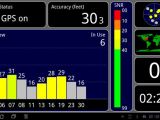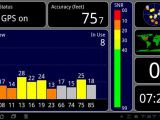Since its introduction, the Transformer Prime has received a lot of complaints about its more than unimpressive GPS performance, so recently an Internet publication has started an investigation to find out what causes these problems, its conclusions showing that a design fault of the tablet is to blame.
As AnandTech has discovered, the problems with the GPS reception of the Prime seem to be caused by its aluminum construction which prevents the radio waves sent by satellites to be accurately received by the tablet.
While the sheet of metal that is used for the Prime isn’t very thick, aluminum is very good when it comes to blocking radio waves, and Asus has placed the GPS antenna right behind such a panel.
According to AnandTech, this causes the bad reception that most Prime users have complained about, and the problem can only be fixed through a redesign of the tablet that is very unlikely to happen at this point in time.
Apple also faced a similar problem when its built the 3G iPad 2 (the WiFi-only version comes without built-in GPS), but avoided such reception issues by placing the GPS antenna behind a black plastic strip, since this material causes a lot less interference to radio waves than aluminum.
Why Asus hasn’t gone with a similar design is anybody’s guess, but the tests that AnandTech run on the Transformer Prime show it lagging severely behind the original Transformer when it comes to GPS connectivity, even if both of these tablets use the same Broadcom BCM4751 GPS receiver, this chip also being used by Apple in the iPad 2.
Asus has recently issued an update that is said to address the GPS performance of the Prime, but this only ensures that ephemeris (used to calculate satellite position) and almanac (details for all GPS satellites) data are downloaded over WiFi to speed up the process of determining your current position.
Needless to say, this update doesn’t do much without network assistance when is forced to rely on the low transfer rates (50 bits per second maximum) of GPS satellites, which are lowered even more when passing through the Prime’s aluminum case.

 14 DAY TRIAL //
14 DAY TRIAL // 

